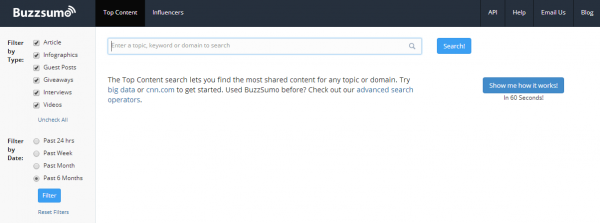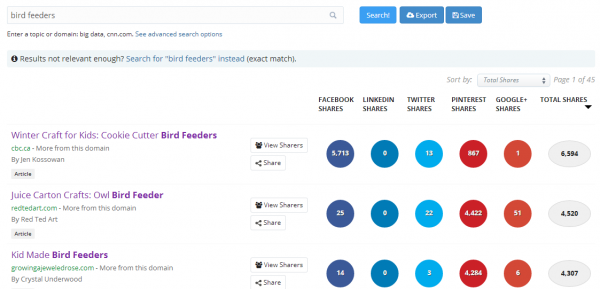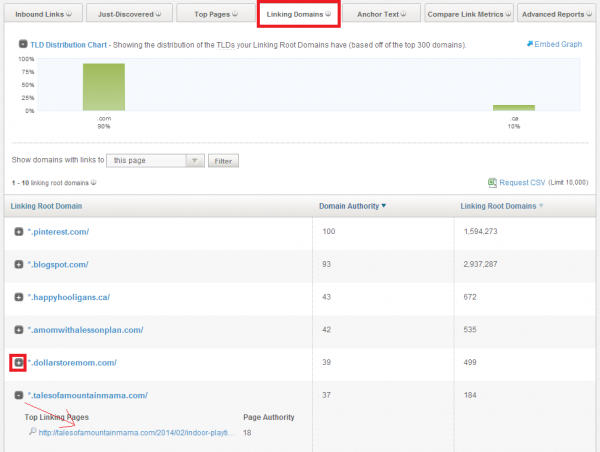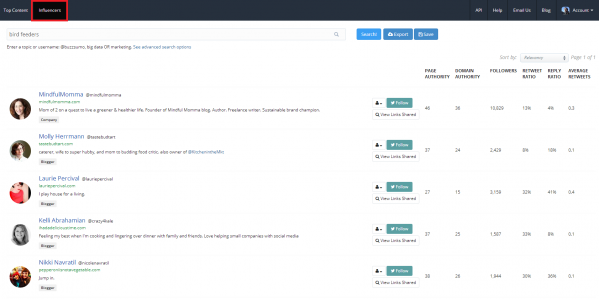Everyone and their mom has a bad excuse for why doing link building the right way is too hard. I’m here today to tell you that link building is easier than you think, it just takes sweat and creativity according to Matt Cutts. The goal of this tutorial is to help reduce the difficulty of sweating and creating by leveraging an up and coming content discovery tool that goes by the name of BuzzSumo.
To break link building down to its most primal form, the process can be distilled down to two steps.
- 1. Find a relevant site.
- 2. Acquire a link on the relevant site.
Easy, right?
Let’s begin with the sweat.
I’m going to define “finding a relevant site” as the sweat. There are loads of garbage sites out there, and far fewer gems within the rough. BuzzSumo can help us discover quality sites by searching for published content which has already resonated well with your target audience. To pull back the reigns for just a moment, the first step in relevant link building is to know your target audience.
Doing link building the right way means centering your efforts around people. Any link you build should be for the betterment of mankind, not because you’re attempting to trick Google with black magicks. The beauty of BuzzSumo is that it aids your understanding of what people like. If you discover content which has been shared prolifically, chances are that if you create something similar, it may also be well received by the community of people you are marketing to.
When you log in to BuzzSumo after creating a free account, this is the screen you will see. We’re currently in the “Top Content” tab. There are options for the “type” of content you are seeking, as well as date filters. I’m going to leave everything checked by default and search for the past 6 months because I’m in the discovery phase of research, as opposed to knowing I have an infographic that I specifically want to promote.
In our example today, we are attempting to market bird feeders, the most interesting thing that exists. To keep it simple, I’m just going to search (bird feeders).
This is great data with immediate takeaways. Search for common threads that provide insight into your target demographic’s online behavior and interests.
- Target Audience: Moms / Kids are the most active social audience
- Subject Matter: DIY / Crafts are subjects of the top 3 most shared articles
- Seasonality: When applicable, the publication dates of content which has been shared the most will be telling about when you should be hitting the publish button
- Unused Social Platforms: Not a single social share from LinkedIn and very few from Twitter and G+
- Most Used Social Platforms: The target audience is most commonly found on Pinterest 1st, and Facebook 2nd
- Target Sites: These sites clearly have an active social audience, and will make good targets for external publishing from your brand
- Content Type: Walkthrough/step-by-step based content with several pictures performs well (easily understood once you look at these top results)
That’s enough information to quickly outline who you’re marketing to, what you should market to them, when the content was published and gained traction successfully, where your audience exists, and why the particular piece of content did so well.
When content has been shared at high levels, it is likely that some high quality natural links have been earned as well. By backlinking the top content you discover you will also find link opportunities, since you know these sites have already linked to content relevant to your niche.
The first few sites that I backlinked in this list did not have many natural links, but it’s worth monitoring that over time. Save these sites in a spreadsheet to check up on, or at least consider as good targets to build relationships with, and possibly arrange publication of your own content. However, 5 sites down in the list, I found that http://happyhooligans.ca/homemade-bird-feeders-cheerios-blueberries/ had attracted links from 10 unique domains (data from Open Site Explorer) and 2,471 social shares.
OSE will show different social data than BuzzSumo, as we’re working with two different crawlers here. Head over to the “Linking Domains” tab to see what domains have linked to this page. By clicking the “+” button next to each domain, you can see the exact pages from that domain with the backlinks.
You now know which sites have linked to content relevant to your niche. Continue prospecting until you have enough targets lined up.
That does it for the site finding or “sweat” portion of the walkthrough. Let’s move on into the “creativity” phase of link building, also known as “acquiring a link”.
Clearly there are many ways to go about DIY bird feeder creation, and moms eat it up. In order to attract some social shares and links directly to our client’s domain, we could create our own unique DIY bird feeder tutorial, with all original high quality photos being a must (specific to this example). Matt Cutts had another great quote during his interview at SMX:
“It’s easier to be real, than it is to fake real.”
Once our content is live, we can outreach to the site owners we discovered during the “sweat” portion of site discovery. For example, http://talesofamountainmama.com/2014/02/indoor-playtime-outdoor-valentine.html linked to the DIY bird feeder post on Happy Hooligans. You can see that they have actually linked to two examples of DIY bird feeder projects, which means they might be willing to link to a third (ours), provided the quality is up to par.
Rather than making this a one off play, it may be even better to dedicate an entire blog on your site towards DIY crafts, pertinent to the outdoors. You might even be able to make the entire blog specific to DIY bird feeders, as it appears the limits of possibilities are solely reliant on how creative you can be.
There is obviously a large audience for this kind of thing, and it may be worth our time to strive to become an authority on the topic. Over time, the number of links and social shares that your on-site blog will receive could match what we’re seeing on already established blogs. The evidence is present in BuzzSumo.
If we’re going that route, it may be helpful to head over to the “Influencers” tab in BuzzSumo.
This tab provides data on the most active and popular twitter profiles operating within the topic you search. You can also search directly by twitter handle. If we are to become an authority within the community we are targeting, it will certainly be worthwhile to establish relationships with individuals who already have a strong following. The sites that they run will also be returned in these results, so this doubles as a good site finding method as well.
Another cool feature of the Influencer Tab is the “View Links Shared” button.
Once clicked, this will return a list of sites that the influencer in question has linked to within their twitter feed. Understanding what content earned a link from influencers in your niche is crucial towards guiding your content strategy.
If you happen to stumble into content relevant to your niche that was linked to by an influencer, click “Other Sharers” to see who else also linked to that content. You’ve now discovered more target sites to backlink or build relationships with. Repeat the “creativity” phase and win some quality links.
BuzzSumo is an amazing tool because it helps guide and create your marketing strategy, specifically by centering your research around the behaviour of the people you want to win the love of. If there are only two things I want you to learn from all of this, it’s that you should know your target audience intimately, and cater to their wants and needs. Like Matt Cutts said,









